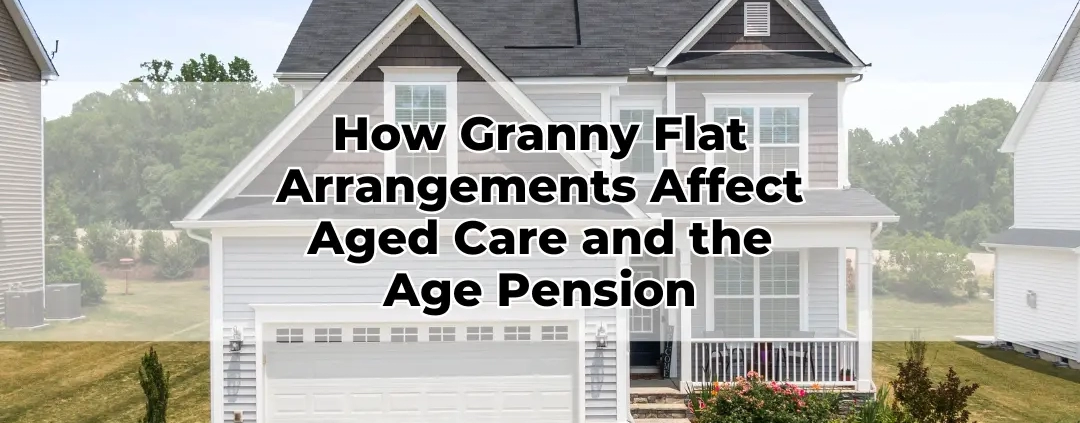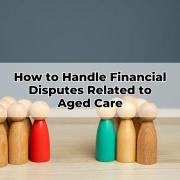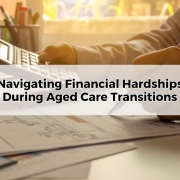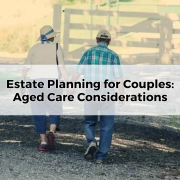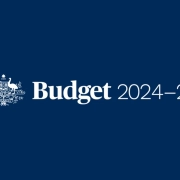How Granny Flat Arrangements Affect Aged Care and the Age Pension
Table of Contents
ToggleGranny flat arrangements have surged in popularity across Australia, particularly as families seek practical and emotionally supportive aged care solutions. These agreements, often informal, involve an older person transferring assets-typically the family home or substantial cash-in exchange for the right to reside in a property for life. While seemingly simple, the financial, legal, and social consequences of these arrangements can be far-reaching, especially when it comes to aged care planning and eligibility for the Age Pension.
Understanding how granny flat interests interact with Centrelink rules, means testing, and aged care fees is critical. Without careful structuring, what starts as a well-intentioned family solution may lead to unintended financial hardship or disqualification from essential support services.
What Is a Granny Flat Interest?
A granny flat interest is a legal term defined by Centrelink and Services Australia. It arises when an older person pays for the right to live in someone else’s home for life. This can involve transferring money, title to a home, or funding the construction of a new dwelling on someone else’s land. Crucially, the older person must not retain legal ownership of the property but must have a life interest or right of occupancy.
This arrangement does not require a self-contained unit or “flat”-it may be a room or separate part of the house. However, for Centrelink purposes, the arrangement must meet strict criteria, particularly around the value exchanged and the formality of the agreement. The granny flat interest is considered an exempt asset under certain conditions, which can benefit Age Pension calculations but also introduce complexity if not correctly documented.
Key Centrelink Rules Around Granny Flat Interests
Centrelink has specific rules to determine whether a granny flat interest affects pension entitlements. A key rule is the “reasonableness test,” which assesses whether the amount transferred in exchange for the granny flat interest is reasonable given the person’s age and life expectancy. If the transfer exceeds the allowable threshold under this test, Centrelink may consider the excess to be a gift, potentially triggering deprivation rules and impacting pension payments.
In addition, the right to occupy the property must be secure and preferably documented. A formal written agreement-though not legally required-is strongly encouraged. Centrelink will evaluate the terms, the ownership structure of the property, and any conditions or restrictions placed upon the older person. If the arrangement is found to lack sufficient legal protection or resembles a disguised gift, it may adversely affect the person’s Age Pension eligibility and rate.
The Impact on Age Pension Eligibility
One of the primary concerns with granny flat interests is how they influence Age Pension entitlements. If structured correctly, the home a person lives in-whether they own it outright or have a granny flat interest-is considered an exempt asset under Centrelink rules. This can be particularly beneficial for those who no longer own their former home but have transferred assets to children in exchange for a right to live in the new residence.
However, if the arrangement fails the reasonableness test or is deemed a partial gift, Centrelink may apply deprivation rules. These rules reduce the older person’s assessable assets by the gifted amount, potentially lowering or cancelling their Age Pension for up to five years. As such, careful valuation and advice are crucial to ensure the arrangement supports, rather than undermines, income support eligibility.
Deprivation Rules and Gifting Consequences
Centrelink’s deprivation rules penalise individuals who give away assets in excess of allowable thresholds. The current limits are $10,000 per financial year or $30,000 over five years. If the value transferred for the granny flat interest is considered excessive or uncommercial, the surplus is classified as a deprived asset.
This has a direct bearing on means testing. The deprived amount continues to be counted as a financial resource, earning deemed income and affecting both the asset and income tests. This can result in a substantial reduction in Age Pension payments or a complete disqualification. Furthermore, deprived amounts are not removed from the assessment until the five-year gifting period has elapsed, reinforcing the importance of precise valuation and evidence.
Implications for Residential Aged Care Means Testing
Granny flat arrangements can also influence aged care assessments if the person later moves into residential aged care. The means-tested care fee in residential aged care considers both income and assets. If Centrelink recognises a granny flat interest, the value of the home in which the person resides may be exempt. However, if the arrangement is informal or fails to satisfy Centrelink’s definition, the accommodation or transferred funds could be assessed as financial assets.
In such cases, the older person may be assessed as having higher means, which can increase daily care fees and impact access to government subsidies. Understanding the crossover between Centrelink and aged care means testing ensures the arrangement doesn’t inadvertently increase out-of-pocket costs during a period of heightened vulnerability.
Documenting the Agreement to Protect All Parties
Formal documentation of a granny flat interest is essential-not just for Centrelink compliance but also for legal clarity and dispute prevention. While a verbal agreement may suffice in some family arrangements, a written agreement outlining the terms of the occupancy, the nature of the asset transfer, and the rights of the older person is strongly recommended.
The agreement should define the nature of the interest, its permanence, who pays for utilities and maintenance, and what happens if the relationship breaks down or the older person needs to move into care. Without formal documentation, families risk disputes, financial uncertainty, and a lack of enforceability should the situation change. Legal and financial professionals should collaborate to ensure the arrangement aligns with Centrelink’s requirements and family intentions.
When the Arrangement Breaks Down
When a granny flat arrangement breaks down-due to relationship breakdown, elder abuse, or the need to transition to aged care-the consequences can be financially devastating. If the agreement is not legally binding or properly valued, the older person may be left without compensation, housing security, or access to their original capital.
Additionally, the loss of secure tenure may mean the original Centrelink assessment becomes invalid, potentially triggering reassessment of pension entitlements and retrospective penalties. In such scenarios, legal recourse may be complex and costly, particularly where the property title is not in the older person’s name. Legal guidance from the outset is critical to safeguarding the arrangement’s longevity and fairness.
Effect on Estate Planning and Inheritance Considerations
Granny flat arrangements can create complications for estate planning, particularly where one child receives a substantial benefit through property or financial transfer. If not structured carefully, such arrangements may be challenged by other beneficiaries on the grounds of unequal treatment, or claims of undue influence may arise.
Furthermore, a granny flat interest does not give the older person ownership or equity in the property. Therefore, it cannot be bequeathed via a will. Families must weigh the potential for intra-family disputes, asset loss, and claims under family provision legislation. Integrating the granny flat arrangement into a broader estate plan-ideally with the input of an estate lawyer-is prudent and prevents downstream disputes.
Taxation Implications and Capital Gains Tax (CGT) Traps
While granny flat arrangements may seem tax-neutral, recent legislative changes have altered their treatment under tax law. Since July 2021, formal written granny flat arrangements involving family members and individuals eligible for the Age Pension or Disability Support Pension may be exempt from Capital Gains Tax (CGT) when created or varied.
This is a significant benefit for families concerned about potential tax liabilities when transferring property ownership. However, the exemption is conditional on the arrangement being legally enforceable and documented. Informal agreements may not qualify, and CGT consequences could arise if property ownership is transferred without adequate planning. Tax advice is essential to avoid inadvertent exposure.
Tailoring the Arrangement for Aged Care Readiness
It is essential to construct granny flat arrangements with an eye toward future aged care needs. The possibility that the older person may need residential care in the future must be built into the agreement. Flexibility should be embedded to accommodate changing care needs, the sale of the property, or a move to supported living environments.
This may involve clauses allowing early termination, buy-back provisions, or transfer of the life interest. Additionally, provisions should clarify what happens to the financial contribution if the arrangement is ended prematurely. Such foresight ensures continuity of care options and financial security, protecting the older person’s wellbeing and rights throughout the ageing journey.
Seeking Professional Financial Advice Before Entering a Granny Flat Arrangement
Before entering a granny flat arrangement, it is imperative to seek comprehensive financial advice. These agreements intersect multiple domains-social security, aged care funding, taxation, legal structuring, and estate planning. Aged care financial advisers are uniquely positioned to evaluate the full spectrum of implications and structure arrangements to meet personal, familial, and financial goals.
Proper advice can identify pitfalls, assess the reasonableness of the exchange, and maximise Age Pension entitlements while ensuring aged care affordability in the future. Moreover, advisers can liaise with legal and tax professionals to ensure a cohesive, compliant, and future-ready arrangement. Early guidance is often the difference between a secure retirement and costly regret.
Conclusion
Granny flat arrangements can be a compassionate and practical solution to support ageing loved ones within the family home. However, they carry significant financial and legal complexity. Missteps in structuring, valuation, or documentation can have enduring repercussions for Age Pension access, aged care fees, tax liabilities, and estate outcomes.
A professionally designed granny flat agreement offers peace of mind, upholds family harmony, and ensures the older person retains financial dignity and housing security. With proactive planning, expert advice, and formal agreements, families can embrace this arrangement as a flexible solution that aligns with both care needs and Centrelink regulations.

